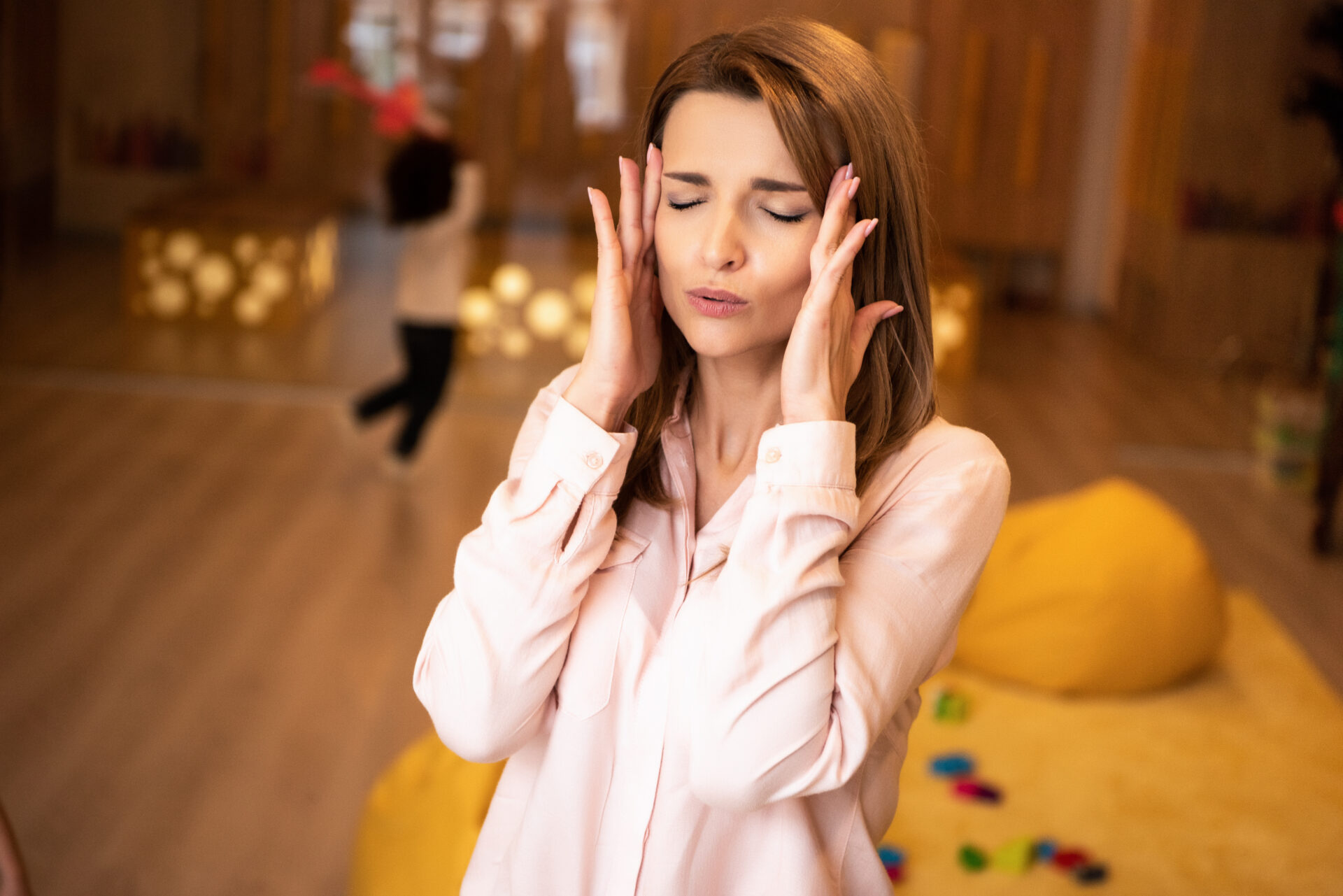Panic Disorders

Panic disorder is a type of anxiety disorder characterized by recurrent, unexpected panic attacks. These attacks are sudden episodes of intense fear or discomfort that reach a peak within minutes. Panic attacks can be terrifying experiences, leading individuals to fear future attacks and avoid situations that may trigger them. This avoidance can significantly impact daily life, limiting social interactions, work opportunities, and overall quality of life.
If you’re coping with a panic disorder, you’re not alone. Approximately 2% to 3% of people in the U.S. have panic disorder. That’s 6.5 million people or more. And according to the Cleveland Clinic, folks assigned female at birth (AFAB) are two times more likely to have panic disorder than people assigned male at birth (AMAB).
With the right support and treatment, people with panic disorders can manage their symptoms and lead balanced, happy lives.
Common Symptoms of Panic Attacks
Panic attacks can manifest with a variety of physical and psychological symptoms and can happen day or night. These symptoms can be overwhelming and may include:
- Rapid Heartbeat (Palpitations): A sudden increase in heart rate is a common symptom of panic attacks.
- Sweating: Excessive sweating, especially in the palms of the hands or the face, can occur during a panic attack.
- Trembling or Shaking: Some individuals may experience trembling or shaking, particularly in the hands or legs.
- Shortness of Breath: Difficulty breathing or a feeling of being unable to catch your breath is a common symptom of panic attacks.
- Feeling of Choking: Some individuals may feel like they are choking or have a lump in their throat during a panic attack.
- Chest Pain or Discomfort: Chest pain or discomfort is a common symptom of panic attacks and can often be mistaken for a heart attack.
- Tingling in fingers or toes: Feeling like your fingers or toes are asleep, or even numb, can sometimes occur during an attack.
- Nausea or Abdominal Distress: Some individuals may experience nausea, stomach pain, or other gastrointestinal symptoms during a panic attack.
- Dizziness, Lightheadedness, or Feeling Faint: These symptoms can occur during a panic attack and may be accompanied by a feeling of unreality or detachment from oneself.
- Fear of Losing Control or “Going Crazy:” Many individuals experiencing a panic attack fear losing control or going crazy.
- Fear of Dying: Some individuals may fear that they are dying during a panic attack, particularly if they are experiencing chest pain or difficulty breathing.
Causes of Panic Attacks and Disorders
The exact cause of panic attacks and panic disorder is unknown. Different experiences and situations can trigger individuals in different ways. However, several common factors contribute to their development, including:
- Genetics: There may be a genetic predisposition to panic disorder. Individuals with a family history of anxiety disorders may be more likely to develop panic attacks or panic disorders themselves.
- Brain Chemistry: Imbalances in neurotransmitters, such as serotonin and norepinephrine, may play a role in the development of panic disorder. These neurotransmitters are involved in the regulation of mood and stress responses.
- Stressful Life Events: Traumatic events, such as the death of a loved one, a serious illness, or a major life change, can trigger panic attacks in susceptible individuals.
- Medical Conditions: Certain medical conditions, such as hyperthyroidism, can mimic the symptoms of a panic attack. It’s essential to rule out any underlying medical causes when diagnosing panic disorder.
- Phobias: Specific phobias, such as agoraphobia (fear of open or crowded spaces) or claustrophobia (fear of enclosed spaces), can trigger panic attacks when a person is exposed to their phobic trigger.
- Caffeine or stimulants: Consuming large amounts of caffeine or other stimulants can increase anxiety levels and trigger panic attacks in some individuals.
- Drug or alcohol use: Substance abuse or withdrawal from drugs or alcohol can trigger panic attacks in some individuals.
- Smoking: Nicotine is a stimulant that can increase anxiety levels and trigger panic attacks in some individuals, especially those with a sensitivity to nicotine.
- Sleep disturbances: Lack of sleep or disrupted sleep patterns can increase the risk of panic attacks in some individuals.
Complications and the Impact Panic Can Have on Your Life
Panic disorders can have a significant impact on your life. They can affect your relationships, work, and overall well-being.
Some common ways panic disorders can impact people’s lives include:
- Social Isolation: Individuals with panic disorders may avoid social situations or places where they fear having a panic attack, leading to social isolation and loneliness.
- Impact on Work or School: Panic attacks can interfere with a person’s ability to concentrate, perform tasks, or attend work or school regularly.
- Financial Strain: The impact of panic disorders on work or school attendance can lead to financial strain due to lost wages or decreased productivity.
- Physical Health: The physical symptoms of panic attacks, such as rapid heartbeat and shortness of breath, can take a toll on a person’s physical health over time.
- Mental Health: Panic disorders are often accompanied by other mental health conditions, such as depression or substance abuse, further impacting a person’s overall mental well-being.
- Quality of Life: The fear of having a panic attack can limit a person’s ability to enjoy life fully, leading to a decreased quality of life.

Treatment Options for Panic Disorders
Like depression, panic disorders cannot be cured. But you can effectively manage them with the appropriate support. There are several effective treatment options available for individuals with panic disorders. These include:
Cognitive Behavioral Therapy (CBT)
CBT is a type of therapy that focuses on changing negative thought patterns and behaviors. It has been shown to be highly effective in treating panic disorders.
Medication
Antidepressant medications, such as selective serotonin reuptake inhibitors (SSRIs) and benzodiazepines, are often prescribed to help manage symptoms of panic disorders.
Relaxation Techniques
Techniques such as deep breathing, progressive muscle relaxation, and mindfulness meditation can help individuals manage anxiety and prevent panic attacks.
Lifestyle Changes
Making lifestyle changes, such as reducing caffeine and alcohol intake, getting regular exercise, and practicing good sleep hygiene, can help reduce the frequency and severity of panic attacks.
Support Groups
Joining a support group for individuals with panic disorders can provide a sense of community and understanding, which can be beneficial in managing the condition.
Self-care
Engaging in activities that promote relaxation and self-care, such as yoga, tai chi, or massage therapy, can help reduce stress and anxiety.
When to Seek Care
We recommend considering treatment for a panic disorder if you are experiencing recurrent, unexpected panic attacks or if your anxiety is significantly impacting your daily life. It’s important to seek help from a mental health professional if panic attacks are causing distress or impairment in social, occupational, or other important areas of functioning. A clinician can provide an accurate diagnosis and recommend appropriate treatment options. Additionally, if panic attacks are accompanied by other symptoms such as depression, substance abuse, or suicidal thoughts, it’s crucial to seek help immediately. Treatment for panic disorders can be highly effective, and the earlier it is sought, the better the outcomes tend to be.
Can You Prevent Panic?
Preventing panic attacks is possible. Prevention often involves understanding triggers and implementing strategies to manage anxiety. With the help of a professional, you can:
Identify triggers
Keep a journal to track when and where panic attacks occur. Identifying triggers can help you avoid or manage them better.
Practice relaxation techniques
Techniques like deep breathing, progressive muscle relaxation, or yoga can help reduce anxiety and prevent panic attacks.
Maintain a healthy lifestyle
Regular exercise, a balanced diet, and adequate sleep can help reduce stress and anxiety levels.
Limit caffeine and alcohol
As mentioned before, these substances can increase anxiety and trigger panic attacks in some individuals. Limiting your intake is considered an effective cautionary measure.
Seek professional help
A mental health professional can provide strategies and treatments, such as cognitive behavioral therapy or medication, to help prevent panic attacks.
Coping with panic can be overwhelming. It’s a journey – and it’s not one you must, or even should, take alone. With proper treatment and support, individuals with panic disorders can learn to manage their symptoms and less stressful, more enjoyable lives.
If you or someone you know is struggling with panic attacks, it’s essential to seek help from a mental health professional. Contact us to schedule a consultation and take your first step today.
